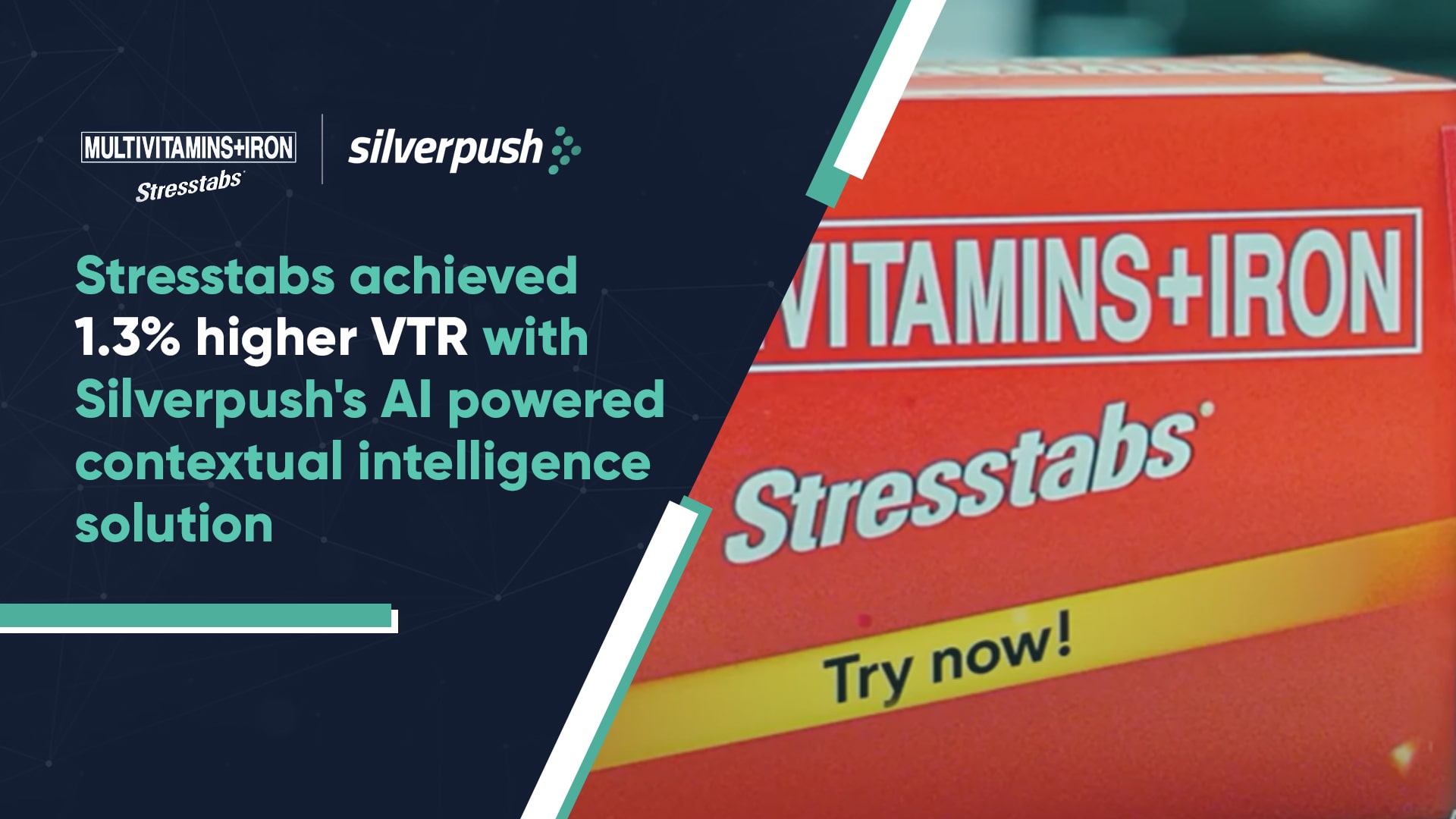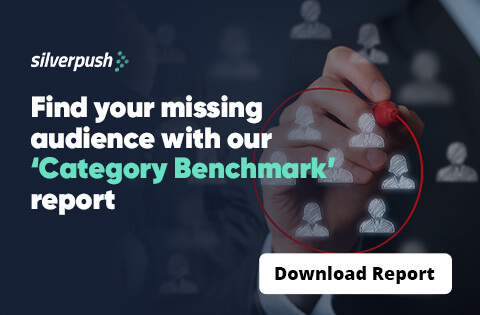Cookieless Advertising: A Must-Include in Your Digital Advertising Diet
PUBLISH DATE: 19 May 2023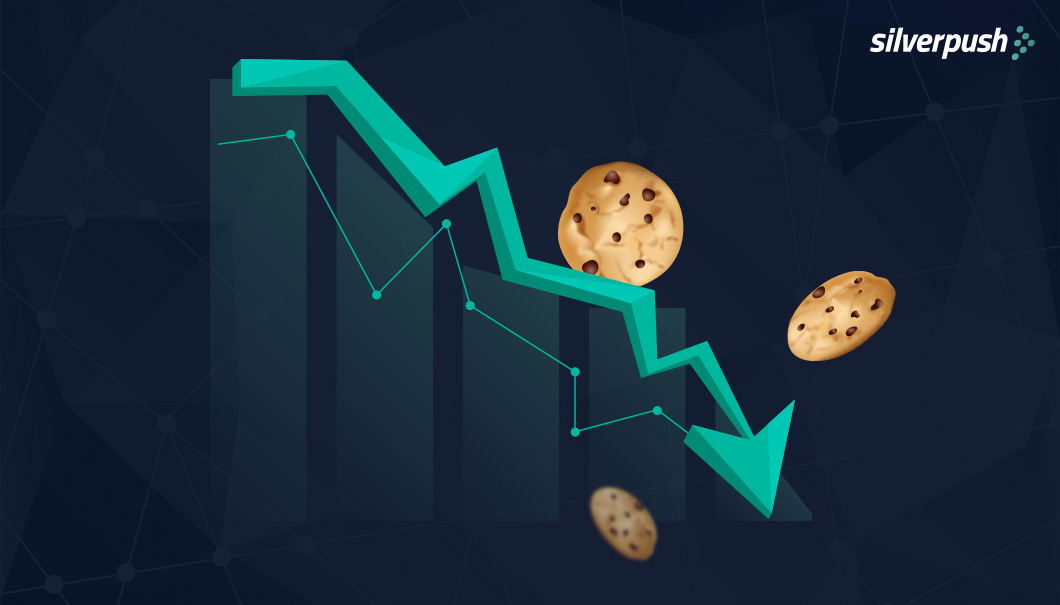
Hold on to your advertising hats, because big cookieless changes are coming to the digital ad landscape!
Many of us have experienced being followed across various social media platforms and other websites. And being given persistent personalized reminders to purchase a product after searching for it online.
What’s the reason behind it, ever given it a thought?
We all leave behind traces of data regarding our online activities, including the websites we visit and the searches we make.
Advertisers use this information to deliver personalized ads through a process called online behavioral advertising.
Basically, it’s done through the use of cookies, which are small files that are stored on our device when we visit a website.
Undoubtedly, cookies have helped fuel a multi-billion dollar online advertising industry. According to data, this well-worn digital tool has helped build digital advertising into a highly efficient $350 billion market.
But now as we witness the dawn of third-party cookies, what’s the new alternative targeting option for brands without taking a hit on their ROI?
This blog has all the answers you need. Read it till the end as you won’t want to miss a single detail about Silverpush’s omnichannel hyper-contextual advertising solutions helping brands thrive in the cookieless world.
Why is There a Need to Go Cookie-Less?
“Before cookies, the web was essentially private. After cookies, the web becomes a space capable of extraordinary monitoring,” said Lawrence Lessig 20 years ago.
For a long time now, advertisers have relied on cookies to monitor users across the internet and offer them customized ads based on their browsing behavior.
However, the usefulness of cookies is witnessing a downfall as they are heading toward obsolescence.
As per Google’s recent reports, by the end of 2024, Google’s Chrome browser is anticipated to restrict third-party cookies, which are already blocked on Safari and Firefox.
Google’s Chrome browser dominates the industry with a market share of over 60 percent in Europe and is widely used across multiple regions globally. As a result, we predict that Google’s proposed cookie policy is likely to spell the end of cookie-based advertising.
Advertisers will face a significant challenge as other tracking techniques also face mounting pressure. Notably, Apple’s app-tracking-transparency (ATT) framework already requires app providers to obtain explicit user consent before tracking them via device identifiers in the mobile app space.
Preliminary data suggests that only around 46% of consumers are willing to be tracked, and this percentage may be even lower in countries where privacy is a major concern for users.
The recent update in Apple’s policies means that app providers will face limitations in tracking users through device identifiers within the Apple ecosystem. Meaning, most users will not be trackable, which could have implications for targeted advertising and user profiling.
It’s worth noting that both Google and Apple have publicly stated that they will not support any attempts to create workarounds, such as probabilistic fingerprinting, to enable user-level profiling within their ecosystems.
Advertisers Need to Look Out for Themselves
It’s predicted that the elimination of third-party cookies and device identifiers will likely have a negative impact on advertising effectiveness and ultimately on the ROI for advertisers in the short term.
This will pose a significant challenge for brand marketers in sectors that are not closely tied to customer transactions, such as consumer packaged goods, automotive, and pharmaceuticals.
Despite the challenges, advertisers have several opportunities to strike a balance between precise targeting and accurate impact measurement while respecting consumer privacy.
Broadly speaking, implementing strategies that prioritize transparency and provide value to users in exchange for their data will most likely lead to success.
Many users are comfortable with personalized advertising as long as they are fully informed about the underlying mechanisms and not misled in any way. This approach can also help build consumer trust in the brand, which is a valuable outcome.
Upgrade your Advertising with Silverpush’s Hyper Contextual Cookieless Solutions
With the end of third-party cookies, advertisers need to shift to new solutions to engage with users in a privacy-safe and effective way.
Silverpush’s Mirrors offers contextual targeting solutions that deliver personalized ads to audiences without relying on their personal data. This ensures brand safety and relevance to the brand, even in a cookie-less environment.
Leverage the AI-powered solution of Mirrors by Silverpush to reach your relevant audience at the right time and place while respecting user privacy. Our platform guarantees complete brand safety and suitability on popular channels such as YouTube, OpenWeb, and CTV.
To learn more about how Silverpush can help you prepare for the cookieless world, simply fill out our form, and we’ll guide you toward successful advertising in a cookieless future.
The Cookieless Future: How to Thrive in the Life After Cookies?
PUBLISH DATE: 08 February 2023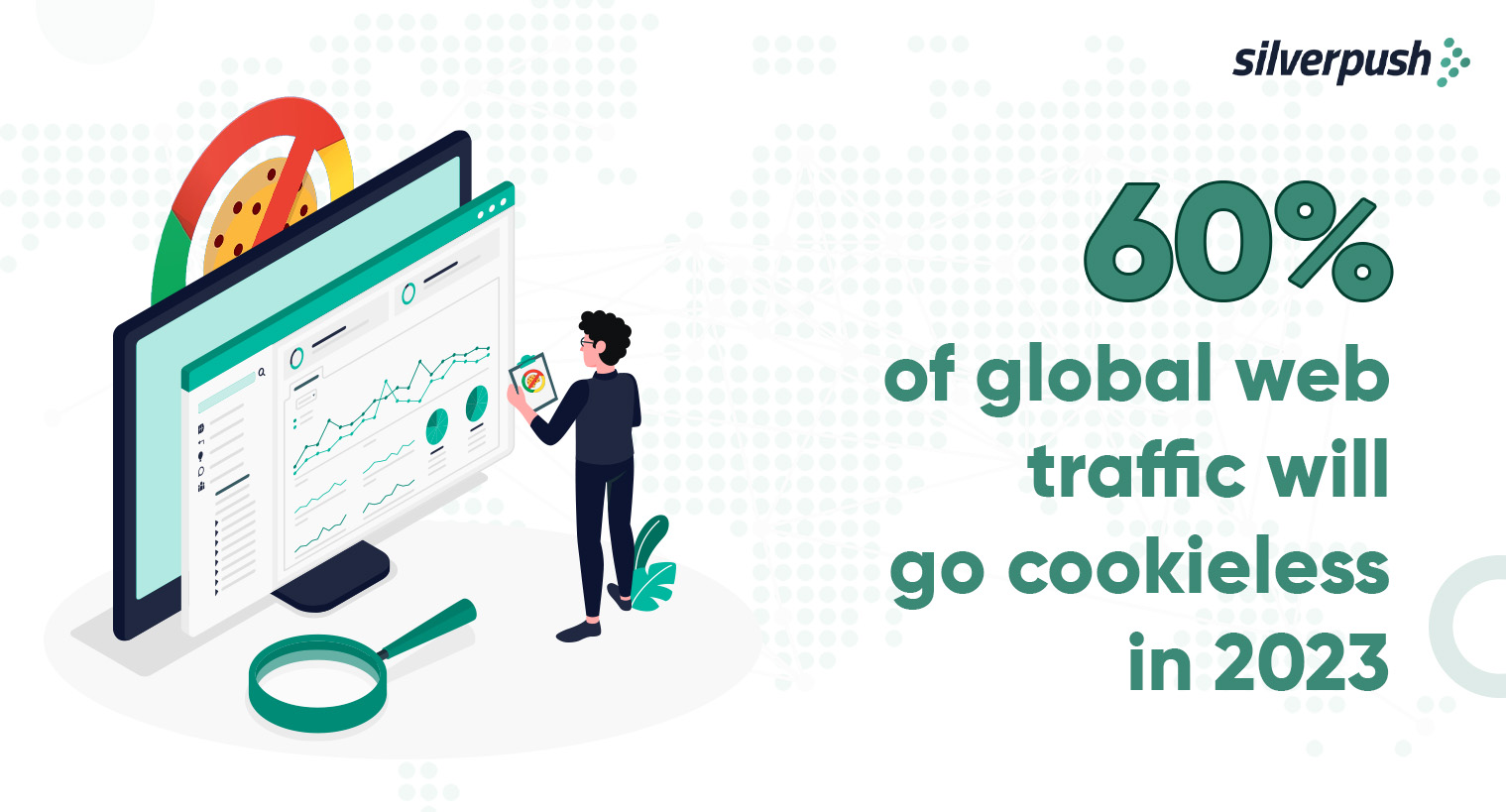
With 60% of global web traffic going cookieless by 2023. Advertisers are still not clear on how to navigate the landscape in the cookieless future. Silverpush’s AI solutions will help fill this gap by providing alternative targeting methods to advertisers & publishers.
Going back to 1992, the year when Netscape made a significant impact in digital history by inventing cookies, allowing websites to save user information and preferences.
This marked a turning point for the digital advertising industry which experienced a revolution as cookies soon became the lifeblood of the online ecosystem. The digital advertising market is currently worth $681.39 billion, and cookies play a major role in its rapid expansion.
As we move forward to 2023, third-party cookies have become a menace for advertisers and publishers who are now looking for alternatives to reach their audience with cookieless advertising solutions.
What Does the Removal of Third-Party Cookies Mean for Advertisers and Publishers?
Today, 86% of US marketers rely on third-party cookies to gain information about user behavior. The impending elimination of third-party cookies presents a major challenge for advertisers to effectively track user behavior and deliver personalized ads.
This change has the potential to negatively impact the digital advertising industry, reducing its efficacy. Publishers will also face difficulties in monetizing their websites, potentially leading to a reduction in the quality of online content as they explore alternative revenue streams like subscriptions or paywalls.
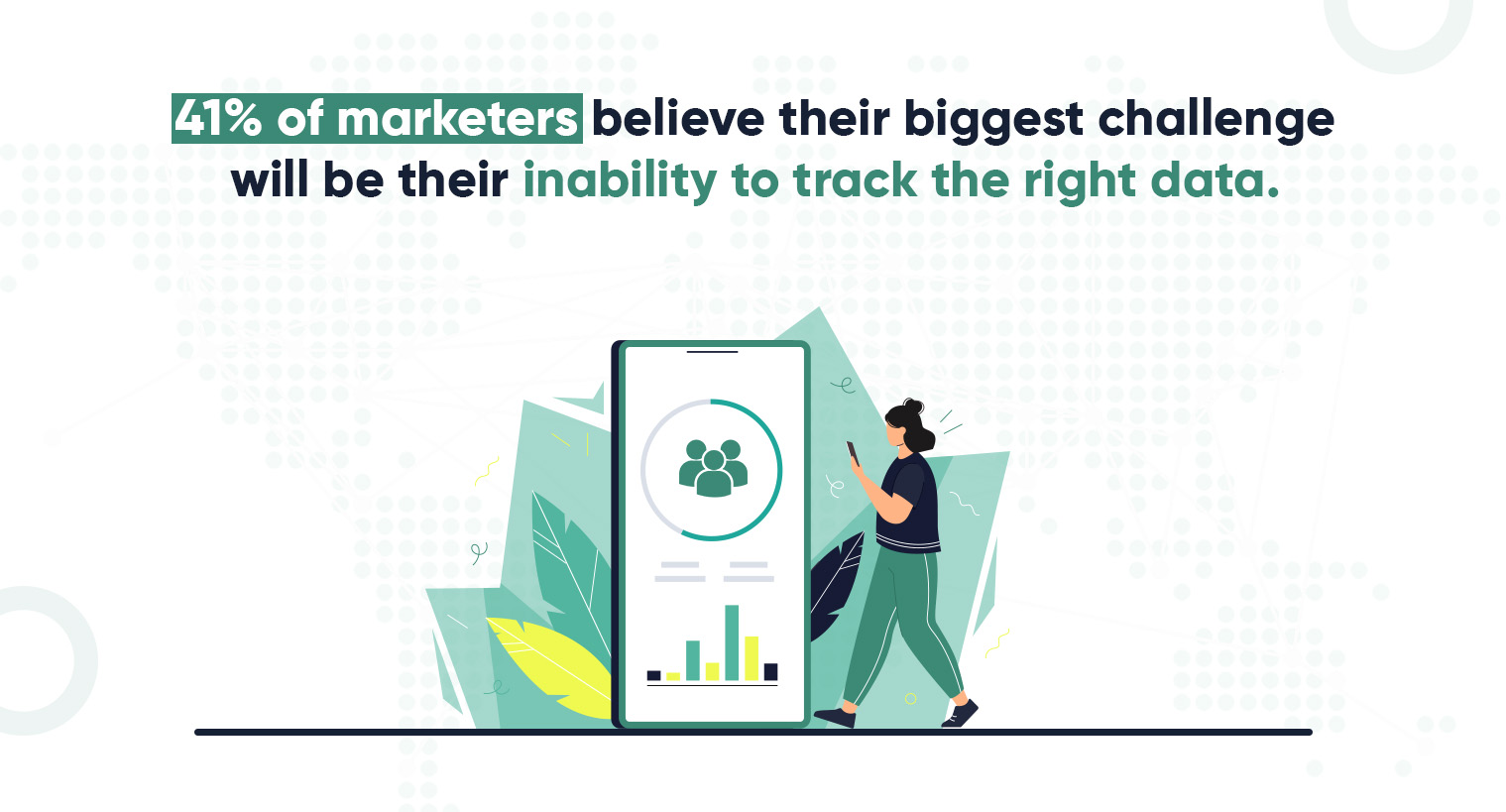
Despite the growing privacy concerns of consumers, personalization remains a priority for them. Marketers must find new solutions to provide personalized experiences without relying solely on third-party cookies to avoid a decrease in ad revenue.
As a marketer, it’s crucial to stay informed and explore new solutions to navigate this shift successfully. This blog will provide answers to your questions on how to adapt to this change.
What Does Cookieless Future Mean?
The cookieless future or cookieless world refers to the ban on third-party cookies. The decision to ban third-party cookies was initiated by Safari and Firefox and later adopted by Google.
The phase-out of third-party cookies by Google, originally scheduled for 2022, was postponed to 2023 and has now been further delayed to the second half of 2024. Take a look at the timeline of third-party cookie depreciation and how Google has again pushed back its deadline, this time to 2024.
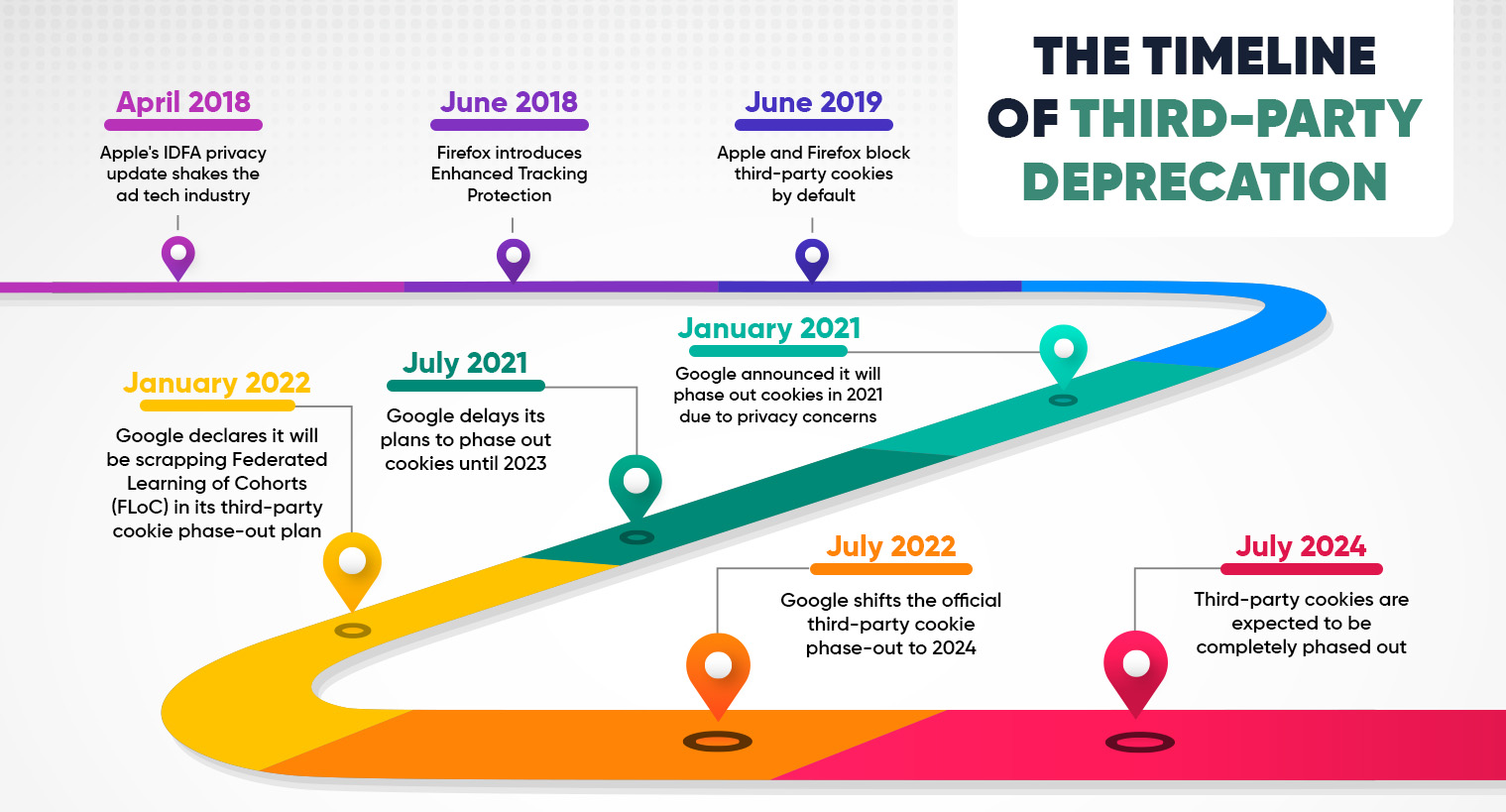
This shift in the digital landscape is driven by privacy concerns and will have a significant impact on advertisers and marketers who rely on cookies to gather information about their target audience.
In the cookieless future, advertisers will need to find third-party cookie alternatives for personalization and targeting, such as through first-party data and the use of privacy-focused advertising methods like contextual advertising.
They should also consider investing in the development of new data sources and technologies and prioritize transparency and user privacy.
To prepare for this change, advertisers and marketers should stay informed about industry developments and new regulations in privacy and data usage.
What Will Happen in a Cookieless World?
An immediate impact of a future without cookies will be seen in the size of third-party audiences, causing a decrease in their viability for media buying.
As a result, marketers will face lower conversion rates and ineffective targeting.
To counteract this impact, marketers must devise innovative audience analysis techniques and utilize alternative marketing methods such as email marketing.
In the wake of phasing out third-party cookies, businesses and marketers need to shift to advertising industry’s next big step – contextual targeting as much as possible.
Contextual targeting strategies could prove crucial to successfully personalize experiences throughout the customer journey while ensuring data security and relevant, targeted advertising opportunities.
Also read: https://www.silverpush.co/news/what-does-life-after-third-party-cookies-look-like/
How Can Marketers Prepare for a Cookieless Future?
As the use of third-party cookies faces imminent extinction, the advertising industry has been actively searching for alternative solutions. Despite the availability of various options, each comes with its own limitations. Here are some of the top substitutes for third-party data to drive your digital marketing efforts:
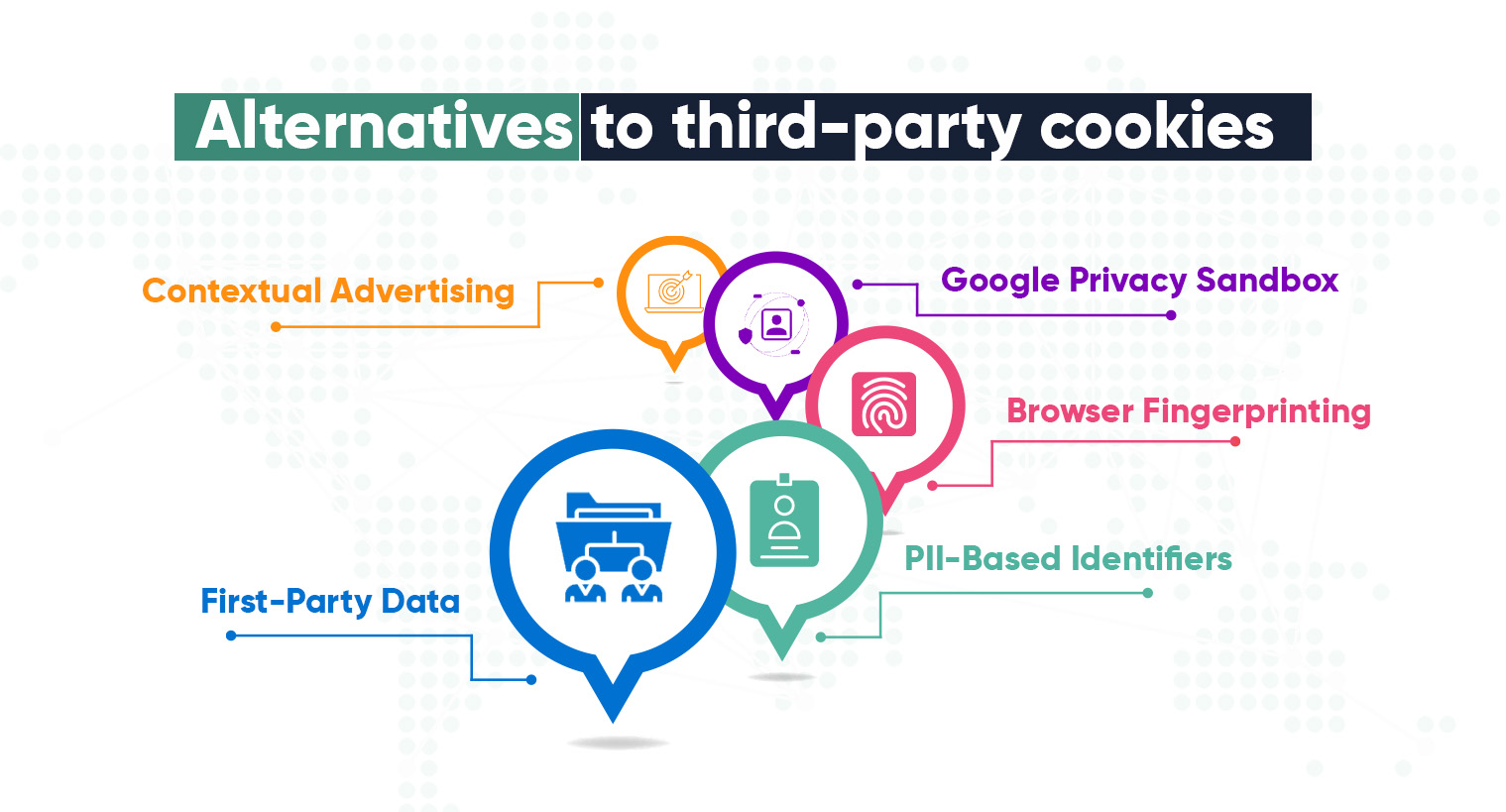
1. First-Party Data
This targeting method also uses cookies, enabling similar targeting capabilities. However, first-party data strategies only track a consumer’s activity within the website that has implemented them.
For instance, if a consumer returns to Pepperfry.com, the site will recall the furniture they previously viewed, but that furniture won’t follow that person to other sites.
This approach allows marketers to target ads to consumers effectively on their own websites without tracking them beyond their platforms. While some customers may appreciate the personalization, collecting first-party data may still feel intrusive to those who are simply browsing and don’t want to feel followed.
2. PII-Based Identifiers
Using personal identification information such as email addresses or phone numbers, marketers can track users across different devices. This is in contrast to cookies, which do not typically transfer between desktop and mobile. With PII-based identifiers, a site can recognize when a previous user has returned by recognizing an ID generated from a login or other site action. This ID does not link to any personally identifiable information, but instead to the user’s online behavior.
3. Browser Fingerprinting
This technique identifies a device and user by assessing various attributes of a device through the browser. This includes browser type, operating system, active plugins, timezone, language, screen resolution, and settings. While browser fingerprinting can accurately identify the same user across interactions, it is not 100% certain.
4. Google Privacy Sandbox
Google Privacy Sandbox, which is still in its early development stages, aims to provide advertisers with anonymized information through the use of five application programming interfaces (API) in Chrome’s browser instead of cookies. This will limit the amount of information available to marketers while allowing individual users to remain anonymous.
5. Contextual Advertising
Contextual advertising is the only option that does not involve any surveillance. Instead of focusing on consumer identity, contextual advertising displays advertisements next to content that is relevant to the ads.
Which one would you like better? Viewing an ad for sports shoes while reading an article about Jeff Bezos (because a few days back you were scrolling through the internet searching for gym shoes) or, coming across an ad for sports shoes while reading an article on fitness.
Definitely, the latter! Because it is relevant to the content they are currently engaged with.
By targeting interests rather than individuals, contextual advertising is a smart option for advertisers to target consumers in the imminent cookieless future.
Ad tech companies like Silverpush are at the forefront of the shift towards a more privacy-focused and cookie-free future, thanks to advancements in contextual technologies.
Silverpush Will Help You Thrive in Cookieless World
Silverpush saw the flaws of third-party cookies years ago. Since, they’re not people-based, not transparent, and can’t identify people over time they never needed it to help their clients reach their relevant audience.
Silverpush, a contextual advertising company has always known that the key to reaching the relevant audience is through contextual targeting.
That’s why we built our AI-powered solution – Mirrors in 2012. Initially, we offered our contextual advertising solutions only on YouTube. Now we have expanded our technology to OpenWeb, Meta, and CTV.
Mirrors privacy-safe and contextual targeting solutions are a rescuer in the cookieless world. Personalized ads are delivered to the audience with zero dependencies on their data. Most importantly, the placement of ads is done in a completely brand-safe environment with relevance to a particular brand.
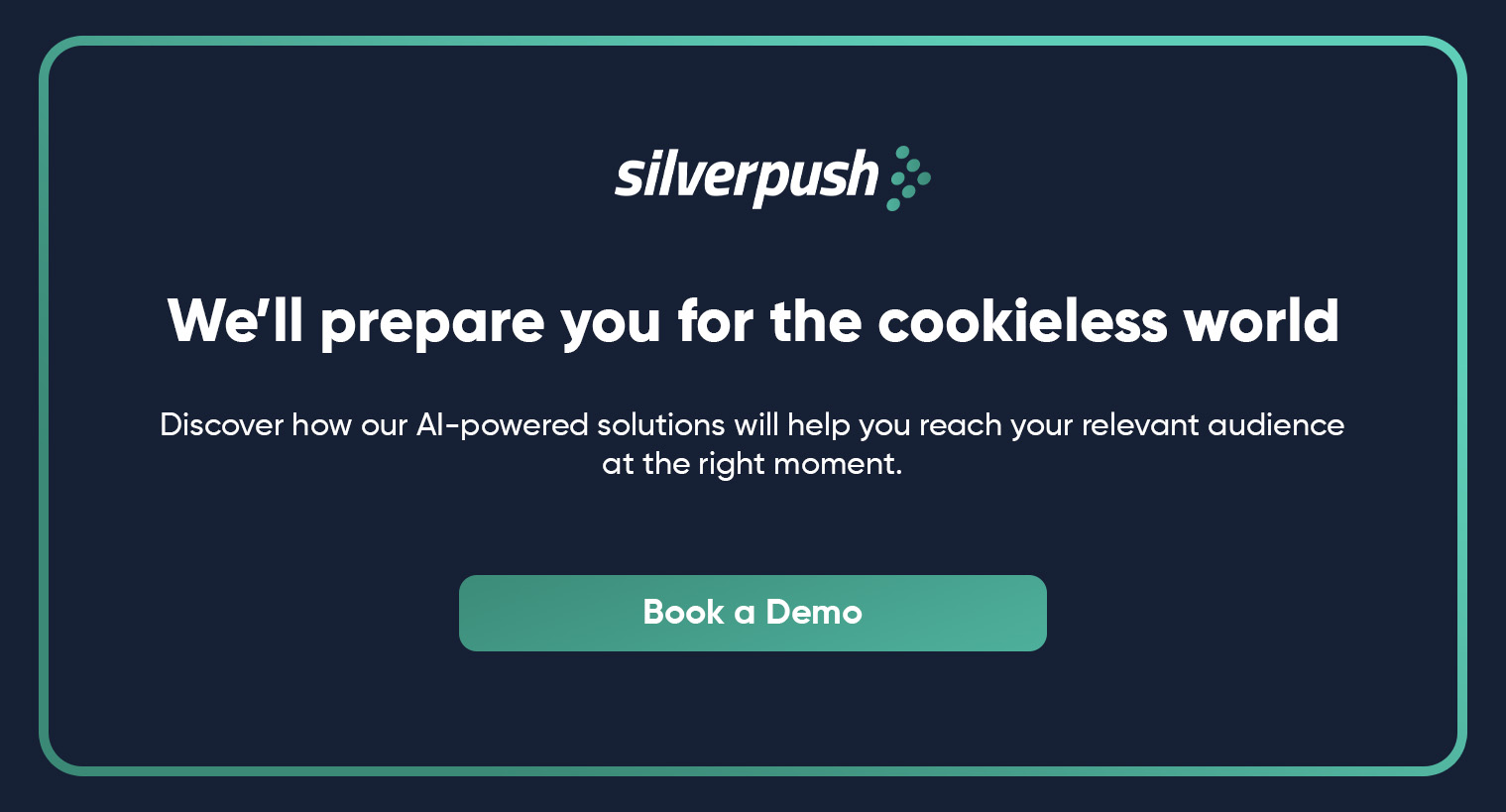
Complete Guide to Reaching Audience with Cookieless Advertising
PUBLISH DATE: 19 January 2023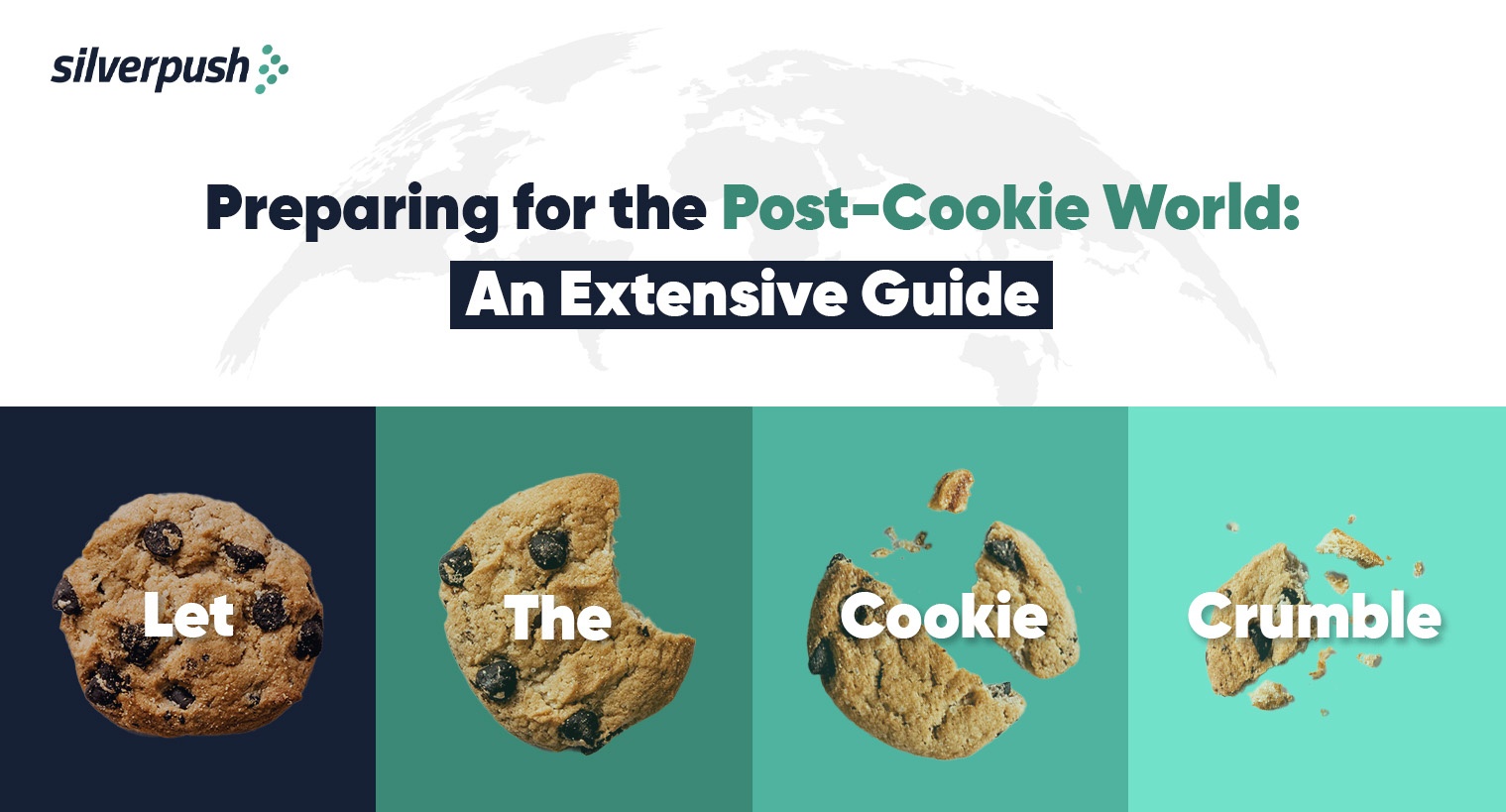
What’s your alternative game plan for effective cookieless advertising? Haven’t thought about it yet? The time is now!
Introduction
The complete year of 2022 was dedicated to cookies! Panic is setting in amongst marketers owing to mounting privacy laws and the ban on cookies, causing them to re-evaluate their strategies.
The year 2023 will be no different! New privacy legislation went into effect on January 1, 2023, in California, Virginia, Colorado, Connecticut, and Utah. It is just a matter of time before further laws are enforced.
Google has announced that it will continue to phase out third-party cookies on Chrome by the end of 2024, ultimately putting an end to two decades of media and data-driven performance-focused advertising.
As the cookieless era looms on the horizon, it’s vital to be proactive in preparing for advertising in a cookieless world. Our comprehensive guide provides in-depth information on how to target your audience without the use of cookies effectively.
In this Guide we’ll Cover:
1. How Does an Ad Get to You?
2. Where do Third-Party Cookies Fit in this Ecosystem?
3. Reasons Behind the Phase-Out of Third-Party Cookies
4. Was the Ban on Third-Party Cookies a Good Decision?
5. What is Cookieless Advertising?
6. Things to Consider While Creating a Cookieless Advertising Strategy
7. What Makes Contextual Targeting an Effective Alternative to Cookieless Advertising?
8. Role of Mirrors’ Contextual Solutions in a Cookieless World?
How Does an Ad Get to You?
Have you ever wondered how an ad actually gets to you when you are:
- Watching a YouTube video
- Reading a news article online
- Playing games on an app
- Browsing through Instagram or Meta
Well, here we bring an end to your curiosity!
In the blink of an eye, the ad space on the page that hosts the platform (you opened) is provided to a network of hundreds of advertising technology companies to see who wants to buy the space at that time on your browser.
After analyzing the context of the page, (if you are reading FIFA-related news) the advertising partner understands from the context of the site that you like football.
Or maybe, it’s Indigo Airlines trying to reach you regarding a flight to Mumbai. They observed your browser searching for flights to Mumbai and shared that information with their advertising partner.
Those advertising partners define min/max bid requirements for their algorithms based on each advertiser’s willingness to pay. Then, depending on the specifications provided by the clients, their algorithms bid directly.
Also Read: Contextual Advertising: The Advertising Industry’s Next Big Step
Where do Third-Party Cookies Fit in this Ecosystem?
Before we go any further, it’s crucial to understand the basics of cookies and how third-party cookies differ from first-party cookies.
What are Cookies?
Cookies are data blocks (sometimes known as little text files) that are generated when a user views and navigates a website. These data blocks retain information in the user’s browser and can recognize the user on future visits.
What is the Use of Cookies?
Cookies enable advertisers to display personalized ads by storing users’ information.
What’s the Difference Between Third-Party and First-Party Cookies?
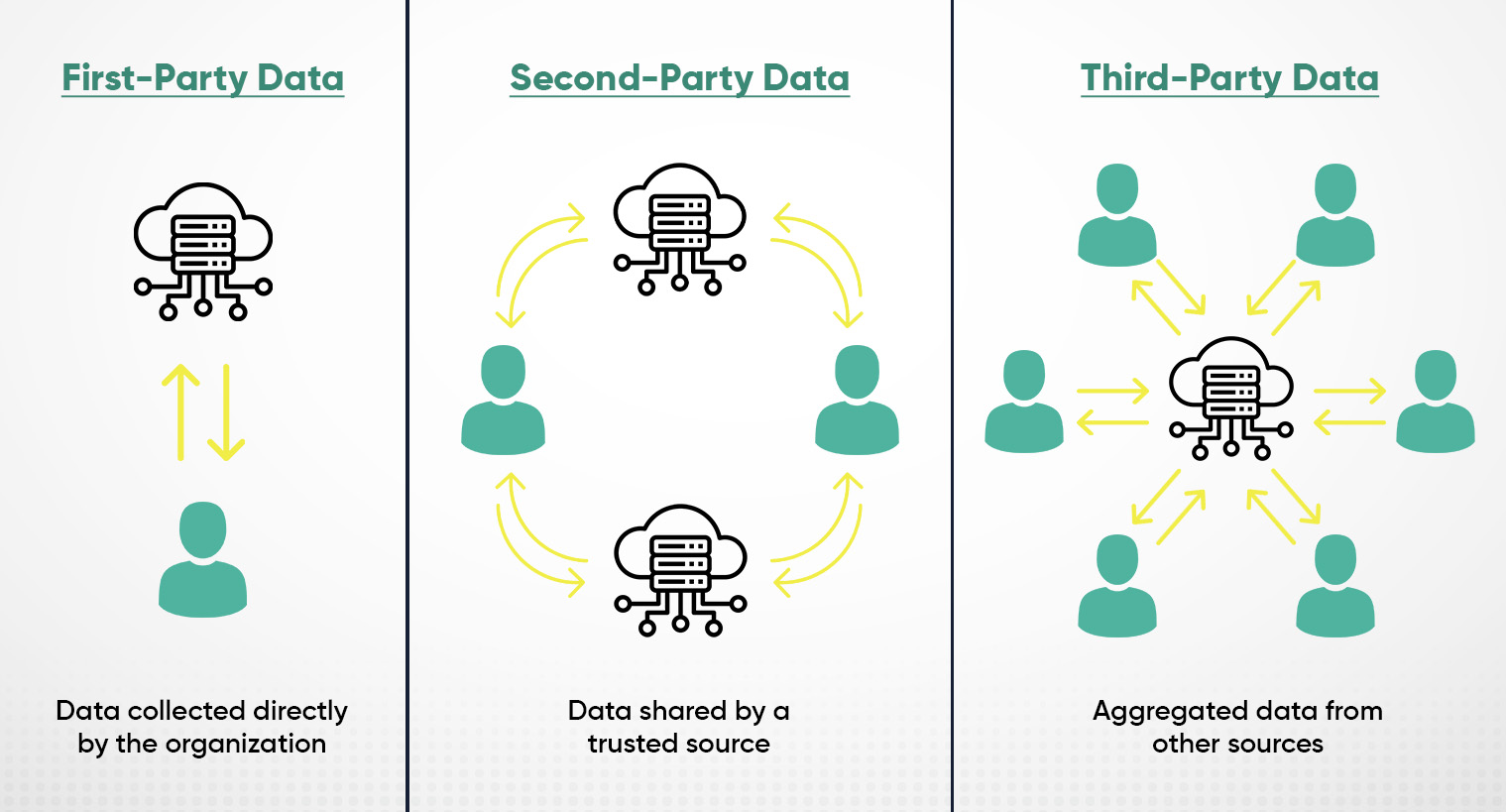
Third-party cookies are set on websites that come from somewhere else. Have you ever looked up a pair of shoes and then seen the same shoes in a few different ad positions on other websites?
This is a prime example of third-party cookies at work. Essentially, third-party cookies are used to track users across multiple sites and target them through ads.
They work in the same way as first-party cookies. They let a firm save a unique ID about the browser, allowing that company to keep track of items you like, have looked at, and so on. When the domain owner “invites” the firm to read or drop a cookie on that browser, this occurs.
First-party cookies, on the other hand, are cookies produced by the host domain and allow a business to enhance the user experience.
For example, first-party cookies store your items in your shopping cart and keep your login information so you don’t have to log in each time you visit a website.
The goal is to assign a unique ID to that browser so that the site owner may track things like:
1. Login Status
To make the site easier to use. Eg. Facebook keeps users signed in for up to 90 days.
2. Past Interests
Newspapers frequently alter sites to highlight essential information for certain users (for example, YouTube also puts music videos on top for me).
3. Purchase Histories
Indigo Airlines may keep track of the fact that you have been browsing for pricing on tickets to Mumbai and have Delhi as the destination filled in for you when you return in an effort to identify the sort of things you enjoy. These are all instances of data associated with first-party cookies, or cookies set directly by the site owner.
Reasons Behind Phase-Out of Third-Party Cookies
Privacy, please? This sentence has been repeated by users for a long time now.
According to data, 66% of consumers said that they were uncomfortable with businesses and brands tracking their browsing history to show them personalized ads.
Originally, third-party cookies were designed to store information under the control of end users anonymously. However, ad tech firms misused the opportunity to collect and link datasets for personalized targeting, leaving consumers worried about their privacy.
Brands use cookies to monitor website visitors, improve user experience, and gather data that allows brands to deliver ads to relevant audiences.
It’s also utilized to find what visitors look at while not on the brand’s websites.
Users will not compromise their privacy as we enter the next era of internet advertising. Their need for privacy and transparency into how their data is gathered and utilized has grown tremendously.
As a result, several major online browsers, including Mozilla Firefox and Safari, have already prohibited third-party cookies and Google will soon join them in this quest. Google has recently announced its Chrome’s Privacy Sandbox proposal.

Google has stated that it would not restrict third-party cookies on its browsers until the second half of 2024. This follows a few delays, mostly because Google wanted advertisers to have more time to change their advertising strategy and test new, less invasive targeted advertising technology.
“We do not believe these solutions will match expanding consumer privacy expectations, nor can they withstand fast shifting legislative limits, and hence are not a long-term investment. Our online products will instead be enabled by privacy-preserving APIs that prohibit individual monitoring while still delivering results to advertisers and publishers”, Google states.
Was the Ban on Third-Party Cookies a Good Decision?
Was the idea behind banning third-party cookies correct? Read the list of pros and cons and decide for yourself.
Pros
1. Google described the termination of third-party cookies as a vital step toward more privacy for online browsers, and it follows Apple’s April 2021 iOS update 14.5, which included a new permission mechanism dubbed App Tracking Transparency (ATT).
2. The phasing out of third-party cookies has shown how much of a publisher’s inventory is under-monetized. For example, cookieless income accounts for around 50% of a publisher’s revenue, yet many do not capitalize on it.
Cons
1. Processes for ad targeting, buying, and optimization will be disrupted and hampered, particularly for performance-based campaigns and specialized audiences.
2. As cookie data gaps weaken attribution and optimization, incrementality testing, and app-to-web tracking, current ad measurement, attribution, and optimization approaches will become peripheral or useless.
3. The phase-out has caught many advertisers, publishers, and marketers off guard. When the phase-out is formally implemented, a lack of planning might result in significant monetization concerns.
What is Cookieless Advertising?
Cookieless advertising indicates that marketers are relying less on third-party cookies. Cookieless does not imply completely cookieless. Cookies can still be tracked by digital marketing businesses in Singapore and web browsers like Google and Safari, but only with the user’s permission. As a result, the user has control over the privacy of their online data.
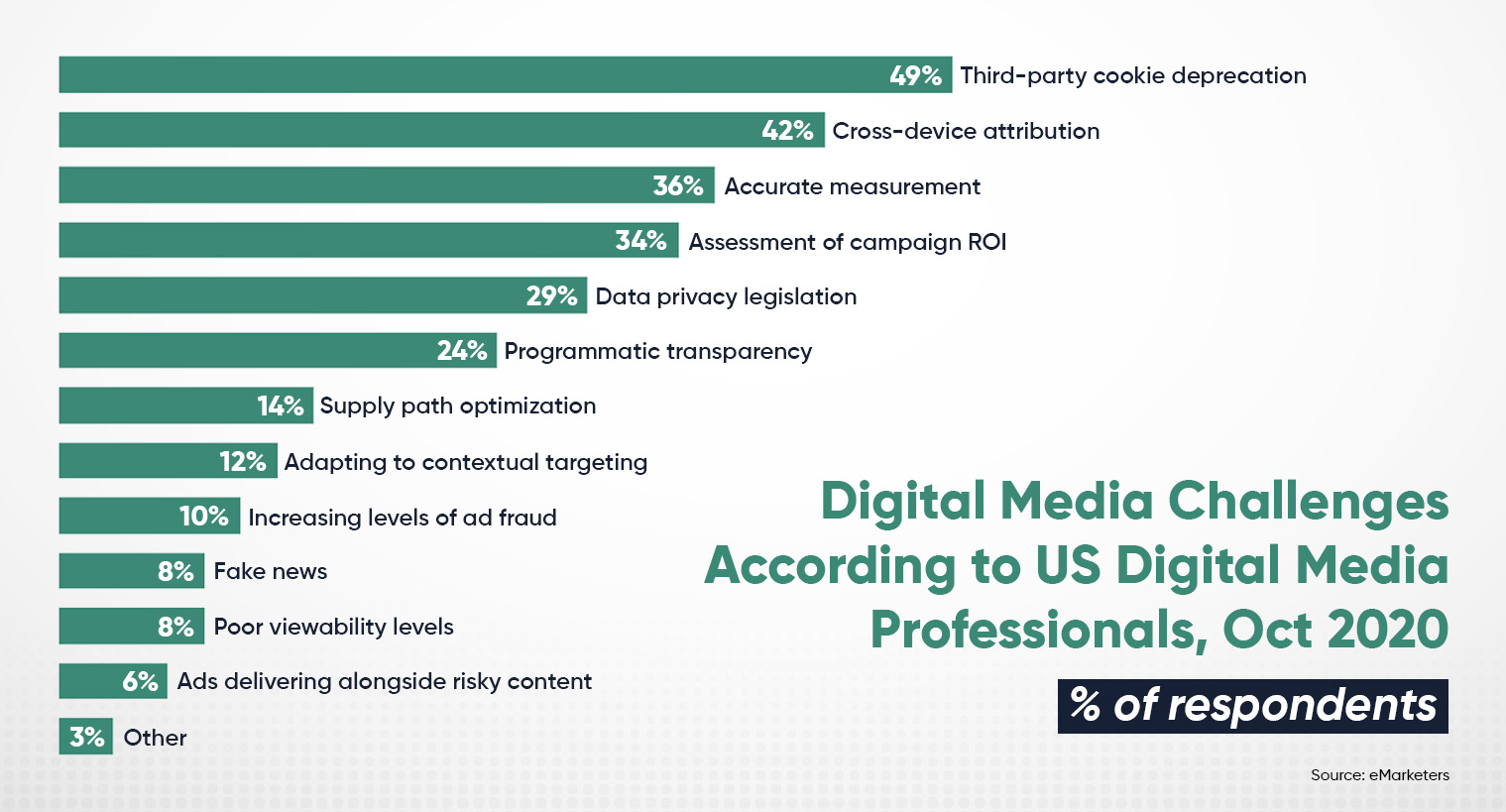
Things to Consider While Creating a Cookieless Advertising Strategy
Even if 2024 seems like a long time away, the race is on to develop viable replacements for third-party cookies. Following are some of the points that need to be kept in mind while creating a cookieless ads plan.
1. Plan your First-Party Data Strategy: If you haven’t already done so, begin inventorying and understanding where all of your first-party data resides across your organization so you can both understand gaps and assess which types of technology solutions can help you store, manage, analyze, and activate that data.
2. Plan for Greater Data Collection: Even in a cookie-free advertising future, you will need to acquire more information about your customers and prospects. Explain that when customers agree to share their data, it results in more relevant advertising and communication. You may experiment with new and intriguing data collection methods, such as quizzes, polls, QR codes, and newsletters.
3. Identify the Right Data Partnerships: You may complement your first-party data with partners that have both standard and unique data sets that you can utilize to improve your cookieless targeting. Location, weather, and buying purpose are examples of these.
4. Tailor your Targeting Strategy: By knowing the appropriate cookieless targeting criteria for the people you want to reach, you may better determine which categories to pursue and which to avoid based on safety, appropriateness, and emotion.
5. Tap into the Right Technology: There are solutions that can assist you in accessing pre-bid contextual categories to locate the best inventory to target and then activate across channels in your preferred DSP. The best is to utilize a technology that focuses on semantic comprehension, brand safety, and page quality to discover the ideal match for your ad. Know how Silverpush can help!
What Makes Contextual Targeting the Best Option to Advertise Without Cookieless?
Contextual targeting is fast becoming a future-proof, brand-safe, and successful cookieless targeting option. According to data, the global contextual advertising market is predicted to reach $376.2 Billion by 2027. Companies all across the world are redirecting their marketing resources toward developing a strong contextual strategy, as you can see from the image below.
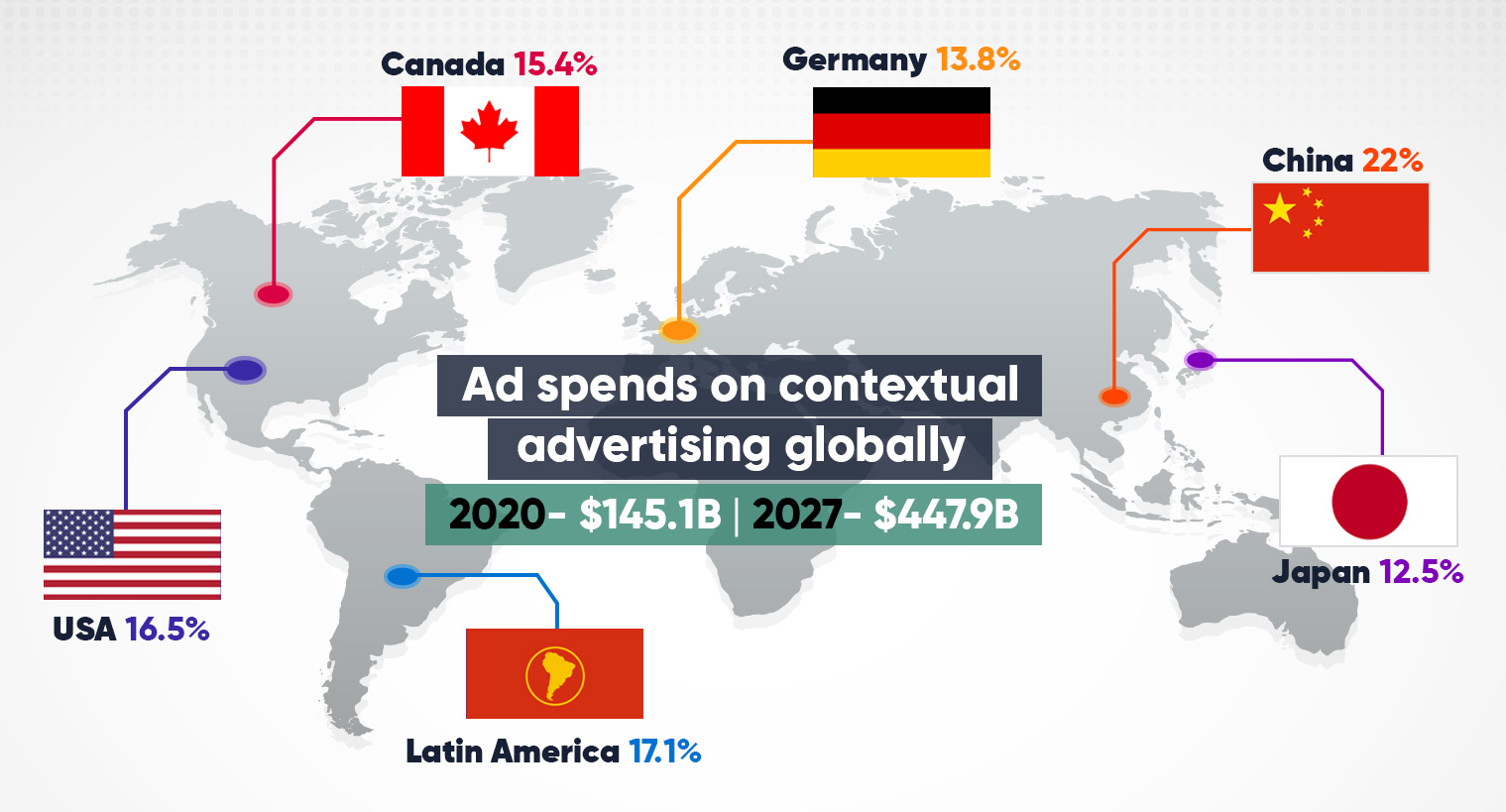
Here is why should choose contextual advertising as the preferred alternative to third-party advertising.
Statistics proving the importance of contextual advertising:
- Context is so powerful that 49% of brand marketers are looking to contextual advertising to replace cookies.
- 79% of consumers are more comfortable seeing Contextual than behavioral ads.
- Between 2020 and 2027, contextual advertising spending is expected to grow 13.3 percent annually.
- 49% of US marketers surveyed are using contextual marketing today.
- In the UK, 32% of marketers use contextual marketing, while 36% use demographic targeting.
Also read: Is Contextual Advertising a Substitute for Cookie-based Targeted Advertising?
Role of Mirrors’ Contextual Solutions in a Cookieless World?
Third-party cookie deprecation certainly marks the end of an era. But the cookieless advertising future will be bright for those advertisers who pivot to contextual targeting to engage with users. Leverage Mirrors by Silvepush’s AI-powered solution to reach your relevant audience at the right time & place without meddling with user’s privacy. We ensure complete brand safety & suitability on YouTube, OpenWeb, and CTV.
To learn more about how Silverpush can help you prepare for the cookie-less world, fill out the form available and we’ll help you advertise in a cookie-free future with our cookie-less advertising solution.


